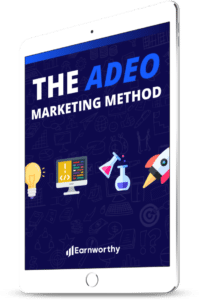
You’ve probably heard a lot about personal branding in recent months. It is the concept that you and I should marketing ourselves and our careers as a brand. But you probably already knew that.
What I want to share with you in this article is the idea that personal branding is no longer just something we do to boost our egos. It has become such an important part of the new economy, that the possibility of you landing your next job can actually depend on it.
And it might even be killing the paper resume once and for all. Yikes!
If you think employers are not searching for you online, you’re wrong. According to one study, approximately 77% of potential employers will Google you before setting up an interview!
Believe it or not, what they see in the search results is largely up to you. It is all about how active you are in building your personal brand online. Do you have a personal website? Chances are that if you do, it will rank pretty high over time when people Google your name.
Are you on Twitter, Facebook, and LinkedIn? On average, these social sites will also rank relatively high for your name. Why not capitalize on the fact that this information will come up when people search for you? You can do this by optimizing your pages and profiles so that they reflect your skills, beliefs, interests, and opinions in the best light possible.
Yet so many people try the exact opposite approach when it comes to personal branding. They try to “hide” from Google. They use pseudonyms, or refuse to even have a Facebook or Twitter account. This might have been fine 10 years ago, but nowadays, employers (and anyone else for that matter) expect to be able to find something about you online.
That’s where personal branding comes in. You should embrace the fact that people are going to search for you. Leverage each and every search to your advantage. Give people a glimpse of who you are, but keep it professional.
So, if you’re already working on building your personal brand, that’s great. Keep it up. If not, hopefully I’ve opened your eyes to why you should consider it.
As for the specifics of how to begin building a personal brand, here are some helpful tips:
1. Create your tagline and elevator pitch
Branding is largely about selling. Therefore personal branding is about selling yourself as a professional in your field. So it would make sense that you need to develop a tagline of one sentence that accurately describes who you are and what you do.
Once you do that, you can elaborate into a couple of sentences that go into more detail about you and your personal brand. This will become your elevator pitch.
Think of it as what you’d say at a networking event when someone asks you the age-old question, “Hi, what do you do?” You’re only going to have a few seconds to respond, so make every word count.
2. Use a professional headshot
When it comes to personal branding, I’m a big fan of consistency. For your profile photos for instance, it’s better to have one or two professional-looking headshots on all of your profiles instead of 10 different grainy photos of you throughout the years.
3. Buy your name in a domain
You can also start building your personal brand by securing some online “real estate,” beginning with a domain name. If you can, try to get your exact first and last name with a .com extension. If you can’t get that, you can try to add a middle name, middle initial, or try other extensions such as a .net or .me.
Personally however, I’m not a big fan of any domain other than a .com. Why? Well even if you told someone your website was “Blah Blah Dot Net,” some folks are still going to type in the “Dot Com.” So I’d always try to secure that first.
4. Start building your social media profiles
Social media plays a huge role in building a personal brand. You need to ensure that have an active presence on several of the big social networks, but in a very professional sense. The four networks I’d recommend are Facebook, Twitter, Google+, and LinkedIn.
If you’re already on some or all of these, that’s great. But there’s one big caveat. You need to make these profiles look as professional as possible. If your Facebook URL is something like “facebook.com/xxILoveSnapchat2014xx,” that won’t work. If your profile photo is updated weekly with a different shot of you at a bar or club, that needs to stop as well.
You need to reimagine not only how your social media profiles should look, but how you should act on these networks as well. Before you post anything, always ask yourself if you’d be okay with it coming up as the first search result when someone searches your name. It’s a tough question to ask, but it matters in a world where we are being judged more and more based on what we say and do online.
Keep in mind, even if you don’t plan on getting actively involved on every social network mentioned above right away, it’s still a good idea to at least secure your name and fill our your profile. You never know when it will come in handy down the road.
5. Use Facebook as a networking tool
Facebook isn’t just for looking at your friends’ Instagrams. It can be a powerful tool for building a personal inner circle of close friends and acquaintances. Keep this in mind as you use it to build your personal brand. Try to join groups that are related to your professional interests. For instance, I’m in several social media marketing groups and business development groups on Facebook, and have made some great connections because of this.
6. Use Twitter to connect with influencers
Twitter is great for expanding your network beyond the people you have actually met in person. There are so many influential people from all walks of life on Twitter. If you follow them and interact from time to time, you’ll eventually expand your network and build your brand in the process. Begin by searching for topics related to your professional endeavors and interests and follow some of the most active people who come up.
7. Set up Google Authorship
Remember that Google+ profile I mentioned above? Yeah, it plays a pretty important role in personal branding these days. You’re going to need to set up Google Authorship. This is basically the way you link your Google+ profile to the content you create on the web, most notably on your blog.
One you’ve successfully linked your Google+ profile to your blog and vice versa, a authorship link to your Google+ profile will show up from time-to-time in search results. Not only has this been shown to generate higher click-through rates, but it also creates more opportunity for social engagement.
8. Make LinkedIn Your New Resume
LinkedIn is very powerful when it comes to personal branding. This is your new resume. Now some employers even allow you to “apply via LinkedIn.” Make sure your LinkedIn profile is at an “All-Star” status, which simply means it is fully complete.
The real power of LinkedIn is not your profile however, but three distinct parts of the platform. They are LinkedIn Groups, Recommendations, and Endorsements.
First, there are LinkedIn Groups. Find and join related groups that spark your interest, and participate when you can. It’s a great way to connect with fellow professionals.
Next, give and request recommendations and endorsements. Think of it like this: If you give other people recommendations and endorsements, some of them will return the favor. The more recommendations and endorsements you have, the more “social proof” your profile will have, which looks good in the eyes of potential employers or clients.
9. Start blogging
Blogging is the lifeblood of personal branding. But if you decide to start blogging, make sure it is done with quality over quantity.
You can set up a blog for free using a site like WordPress.com. However, your best bet in the long run is going to be setting up your own personal website (using your own domain name) and blogging directly on your site.
Other great places to blog are on Medium.com (which was founded by the Twitter co-founders), Quora, and LinkedIn.
So, what should you blog about? Well, that depends on what you’re interested in. You want to position yourself as an expert in your field, so look for opportunities to write about things that will be useful to others with similar interests.
Oh, and I should mention that “blogging” doesn’t have to only be done in writing. You can just as easily start a video blog or “vlog,” if that’s your thing. But hey, why not do both?
I cannot emphasize enough how important blogging is. And if you’re up for it, you can even try to monetize your blog after a while.
10. Get your content on other blogs
There are countless blogs out there that are looking for great content from knowledgeable authors. Find them, and ask to guest blog. Many of the larger sites even have links to become an author or contributor.
Take advantage of these opportunities, because it can catapult your brand to a new level. Guest blogging can make or break your personal brand, because it exposes you and your knowledge to a whole new audience. Heck, you might even get a few new Twitter followers from it (wink, wink).
Bring it all together
I’ve covered a lot of important components of personal branding above, and I understand that there’s not enough time to do all of it. If nothing else, try to work on just a few of these tips on a weekly basis.
Personal brands are not built overnight. But whenever you can, try to tie your efforts together. For instance, if your guest posts get published on a notable site on a regular basis, add that to your resume on LinkedIn and share it on your social channels. Maybe even add a “contributor to” section to your personal website and list links to your articles there.
You should always look for ways to leverage your efforts. Another way to do this is to take some of your past blog posts and repurpose them into different formats. For instance, if you wrote a great post on a particular subject, why not make a short video about it too? It’s all about getting your ideas out there in as many ways as possible.
There is much more to personal branding than what I’ve discussed here, but hopefully this was a good foundation of information. If you now have more questions than when you started reading this article, then I’ve done my job. I wanted to show you what is possible with personal branding and give you some options that you can explore further.
Of course, if you have any questions at all, I’d be more than happy to answer them if I can.
For short questions, send me a tweet. For longer questions, post a comment below.
Or you can set up a one-on-one chat with me via either Google Helpouts or Clarity.
Best of luck in building your personal brand!





